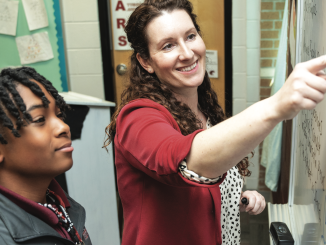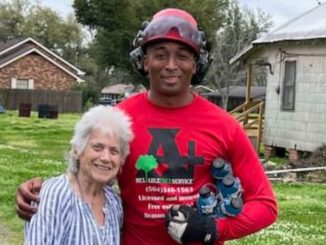
By Clayton “Snookie” Faucheux, St. Charles Parish Councilman
(EDITOR’S NOTE: Since Hurricane Katrina, residents of St. Charles Parish have written about their concerns if such a storm were to hit the parish head-on. Councilman Clayton “Snookie” Faucheux herein updates them about our hurricane protection on the east and west banks so far.)
East bank Hurricane Protection
The East Bank Hurricane Protection Levee is scheduled to be completed in September of 2007 to the federally-authorized height of 13.5 feet.
This vital project is ahead of schedule due to $39 million appropriated in the 3rd Congressional Appropriations Act to move it forward and $25 million allocated to provide maintenance activities.
This money was in jeopardy due to shortfalls for the west bank and vicinities projects, which included expansion into St Charles to tie into the east guide levee of the Davis Diversion Project. The west bank project is designed to provide hurricane protection for the west bank of Jefferson but now includes Ama.
The Corps of Engineers determined the greater need was on the west bank project and presented a plan to use the $39 million allocated for the east bank project. Local leadership mounted a campaign lead by Congressman Charlie Melancon and Senator David Vitter to protect the allocation and identify funding for the west bank project. Our federal legislators were successful in identifying funding mechanisms, which allowed the expansion of the west bank levee to protect the community of Ama.
The fight must continue to push for the newly developed 100-year flood protection Corps of Engineer’s strategies, which propose 17 feet levees. The new strategy puts the completed East Bank Hurricane Project at a deficiency with a 17-foot levee to the east in Kenner and 23-foot levees to the west as implemented for the Bonne Carré Spillway.
This scenario creates a funnel effect, which will allow for tidal surge increases into St Charles during storm events. The Corps of Engineers model allows for some deficiency due to the wetland area between St Charles and Lake Pontchartrain.
However, Hurricane Katrina has greatly damaged the quality of these wetlands. The Corps modeling for storm surge allows for one-foot drop in storm surge for every mile of quality wetlands acting as a barrier. Local pressure from elected representation has requested the revisiting of the Corps to address the quality of storm protection in this area.
The Norco Bayou Trapanier Pump Station – the first pump in the East Bank system was completed in record time with local public and private industry funds. Three more pumping stations are planned for sites in this levee system at a projected cost of $54 million to provide complete East Bank protection.
We must “think outside of the box” to acquire funding streams to complete this necessary project. Pending legislation at the congressional level will allow the public-private strategy to continue by providing tax credits for industry donating money to federally authorized flood protection projects. Efforts must be continued to push for the new pumps at the already identified locations.
East Bank residents will not be safe until the pumps are completed in this levee.
The second pump at the Destrehan canal is estimated to cost $18 million. The completion of this pump will require possible state and federal financial assistance.
West bank Hurricane Protection
The West Bank Hurricane Protection Levee is still in the permitting phase for three of four projects with construction under way for the Magnolia Ridge project.
With the first phase of this levee under construction, we have never been better positioned to complete the permitting phase for this project, which will protect West Bank citizens.
The quality of flood protection must be maintained with the start of the first West Bank Hurricane Protection Levee pump, which has already cleared the design phase and is ready to be bid.
St Charles Parish appropriated $13 million toward the West Bank Hurricane Protection Project. St Charles was recently awarded $4.5 million by the state to aid in West Bank hurricane flood protection projects demonstrating the growing approval for this project.Ama hurricane protection is now a reality
St. Charles Parish has tentatively received approval to include Ama in the West Bank and Vicinities Hurricane Protection Project with expansion from Jefferson to tie into the Davis Diversion project.
Three more permits must be fought for and received to provide complete West Bank hurricane protection.
A hydraulic study has been submitted to the Corps of Engineers for the Willowdale/Willowridge area and I expect approval for this study to be delivered within the next 90 days.
The second permit will provide hurricane protection from Cousins Pump Station to Kellogg Pump Station and tie in to the on-going Magnolia Hurricane Protection Project. This permit will provide protection for the Lagatuda /Mimosa/ Boutte areas.
The third permit must be received to close gaps in the Sunset Drainage area and the Des Allemands Bayou alignment.
The Corps of Engineers is proposing a hurricane levee alignment south of St. Charles in the Lake Salvador Basin. This project, the Donaldsonville to the Gulf project, will use the Gulf Intracoastal WaterWay to provide hurricane protection.
This is not adequate protection for St. Charles residents on the west bank. Storm surge in Lake Salvador and Lake Cataouchie will inundate St. Charles without a secondary line of protection and St. Charles Parish government is not being complacent in the fight for stronger protection.
Pump upgrades have been completed in many areas of of the parish such as Destrehan II, Kellogg, Davis-Barton and Willowdale, and the parish is now making sure drainage in these neighborhoods is adequate so that the floodwater makes it to these pump stations. Automatic bar screen cleaners are being added to these state-of-the-art facilities to promote real-time cleaning during flooding events.
Questions? Comments? Wite shonnar@heraldguide.com




Be the first to comment